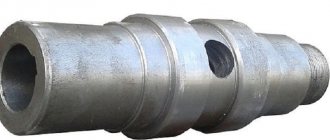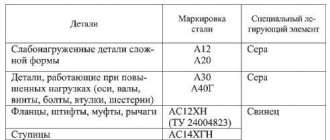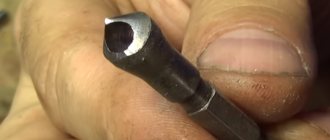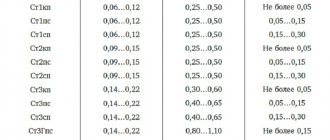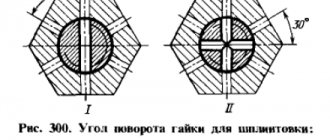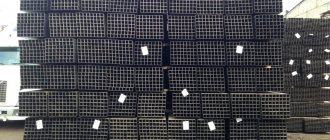Where is round wire rod used and for what?
Wire rod is used for the production of cold-deformable reinforcement, constrictions for wire, and various hardware products (for example, self-tapping screws), packaging wire, and contact wires are also made from it.
Steel wire rod is necessary for the production of electrodes and welding wire, the production of ropes, metal cord used as a reinforcing material in car tires and other rubber products (in conveyor belts, high-pressure hoses). Wire rods made from high-carbon steel grades serve as raw materials for the production of special-purpose wire.
3 CLASSIFICATION, MAIN PARAMETERS AND DIMENSIONS
3.1 According to the cooling method, the wire rod can be cooled in air or subjected to one- and two-stage accelerated cooling: УО1 - one-stage cooling; УО2 - two-stage cooling; VO - air cooling.
3.2 In terms of rolling accuracy, wire rod is manufactured in accordance with GOST 2590: B - increased accuracy; B - normal accuracy.
3.3 The wire rod is made with a diameter of 5.0; 5.5; 6.0; 6.3; 6.5; 7.0; 8.0 and 9.0 mm. By agreement with the consumer, it is allowed to produce wire rod with a diameter of more than 9.0 mm in coils.
3.4 The diameters of the wire rod, maximum deviations in diameter, cross-sectional area and weight of one meter of length must comply with GOST 2590. For wire rod with a diameter of up to 9.0 mm inclusive, manufactured on wire mills not equipped with finishing mill blocks, a deviation in diameter of ±0 is allowed, 5 mm.
3.5 The ovality of the wire rod should not exceed 50% of the sum of the maximum deviations in diameter. An example of a symbol for wire rod accelerated cooled in a single stage (UO1) with a diameter of 6.0 mm from steel grade StZkp of normal rolling accuracy (B):
Wire rod V-6.0-StZkp - УО1 GOST 30136-94
6 CONTROL METHODS
6.1 Chemical analysis of steel is carried out according to GOST 22536.0 - GOST 22536.9, GOST 12359 or other methods that ensure the required analysis accuracy.
6.2 Measurement of the diameter of the wire rod and sampling for all types of tests are carried out at a distance of at least 1.5 m from the end of the coil for coils weighing up to 250 kg and at a distance of at least 3.0 m for coils weighing over 250 kg. To determine the mass of scale on the surface of the wire rod, a sample 500 mm long is taken.
6.3 Surface quality control is carried out visually without the use of magnifying devices. The depth of defects on the surface of the wire rod is determined after filing with a needle file until the defect is removed, followed by a comparative measurement of adjacent areas - cleaned and uncleaned. If necessary, it is allowed to control surface quality using magnifying devices.
6.4 The diameter of the wire rod is measured with an accuracy of 0.1 mm using calipers of type ShchTs-1, ShchTsT-1 according to GOST 166.
6.5 The mass of scale on the surface of the wire rod is determined according to the method given in Appendix A.
6.6 Tensile strength and relative narrowing of the cross section after rupture are determined according to GOST 1497.
6.7 The cold bending test is carried out in accordance with GOST 14019.
6.8 Microstructure control is carried out in accordance with GOST 8233.
6.9 The grain size of ferrite is determined according to GOST 5639.
6.10 It is allowed to use statistical and non-destructive methods for monitoring the mechanical properties and other standardized characteristics of wire rod.
5 ACCEPTANCE RULES
5.1 Wire rods are accepted in batches consisting of coils of wire rod of the same diameter, one heat and one cooling method. It is allowed to complete a prefabricated batch of wire rod of the same diameter, one grade of steel, several heats and one cooling method. The mass of the prefabricated batch should not exceed the wagon norm.
5.2 The quality of the surface is checked on each coil of wire rod. To control the diameter and ovality of the wire rod, 5% of the coils are selected, but not less than three from the batch.
5.3 To control the mechanical properties, microstructure, scale mass on the surface of the wire rod and bending tests, three coils are selected from the batch. From each controlled coil, one sample is taken for each type of test from either end of the coil - for wire rod cooled in a single stage or in air, and from the rear end - for wire rod cooled in a two-stage method. Determination of scale mass, relative narrowing of the cross-section after rupture, tensile strength, as well as bending testing and microstructure control may not be carried out by the manufacturer, provided that these characteristics are ensured by the production technology. If unsatisfactory results are obtained for at least one of the indicators, repeated tests are carried out on a double sample. The results of repeated tests are applied to the entire batch.
5.4 Sampling to determine the chemical composition is carried out in accordance with GOST 7565. Determination of the chemical composition in the finished wire rod may not be carried out if the manufacturer guarantees compliance with established standards.

